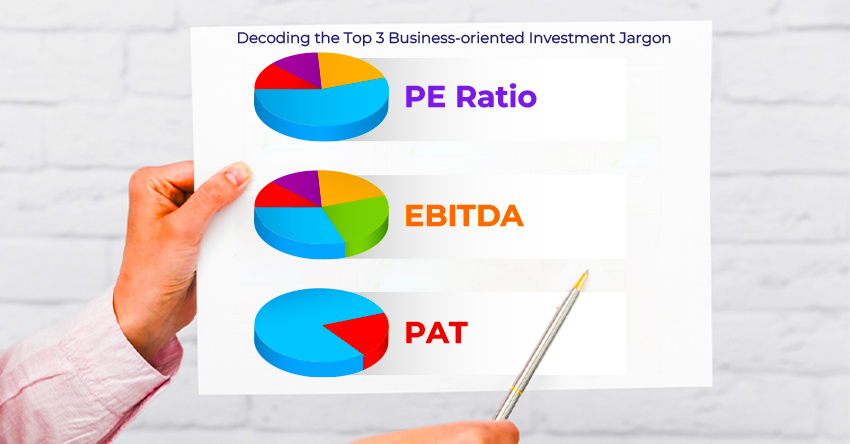In the realm of investment, a grasp of financial jargon can mean the difference between informed decisions and confusion. Among the myriad terms, PE Ratio, EBITDA, and PAT stand out as crucial metrics for evaluating investment opportunities while investing in companies’ stocks. Let’s decode these concepts to empower investors with deeper insights into their portfolios.
PE Ratio (Price-to-Earnings Ratio):
The PE Ratio serves as a yardstick for assessing a stock’s valuation relative to its earnings. Simply put, it measures how much investors are willing to pay for each rupee of a company’s earnings. Calculated by dividing the current market price per share by the earnings per share (EPS), the PE Ratio offers valuable insights into investor sentiment and growth expectations.
A high PE Ratio suggests optimism about future earnings growth, while a low ratio may signal undervaluation or muted growth prospects. For instance, if a stock trades at Rs. 50 per share with an EPS of Rs. 5, its PE Ratio would be 10 (Rs. 50 / Rs. 5), indicating that investors are willing to pay Rs. 10 for every Rupee of earnings.
EBITDA (Earnings Before Interest, Taxes, Depreciation, and Amortization):
EBITDA strips away non-operating expenses like interest, taxes, depreciation, and amortization to reveal a company’s core operating performance. By focusing solely on operational efficiency, EBITDA facilitates meaningful comparisons across companies and industries, unclouded by financing decisions or accounting nuances.
For instance, if Company B boasts an EBITDA of Rs. 10 million, it means the company generated Rs. 10 million in earnings before considering interest, taxes, depreciation, and amortization expenses.
PAT (Profit After Tax):
PAT, often referred to as net profit, represents the bottom line—the profit left after deducting all operating and non-operating expenses, including taxes, from a company’s total revenue. This metric is a vital gauge of a company’s profitability and financial health, showcasing its ability to generate earnings after meeting all obligations.
A consistent increase in PAT over time signifies growth and financial stability. For example, if Company C reports a PAT of Rs. 5 million, it means the company’s net profit after all expenses and taxes amount to Rs. 5 million.
In essence, comprehending these investment jargon empowers investors to make well-informed decisions while investing in stocks of businesses/companies and assess their financial health and valuation accurately.
KSL’s expertise in investment advisory enriches this understanding, enabling investors to understand and handle the complexities of the investment landscape with confidence. Remember, knowledge is the cornerstone of successful investing, and mastering fundamental concepts paves the way for prudent portfolio management.
